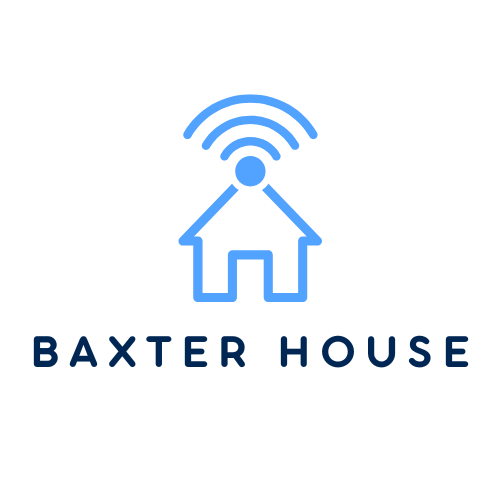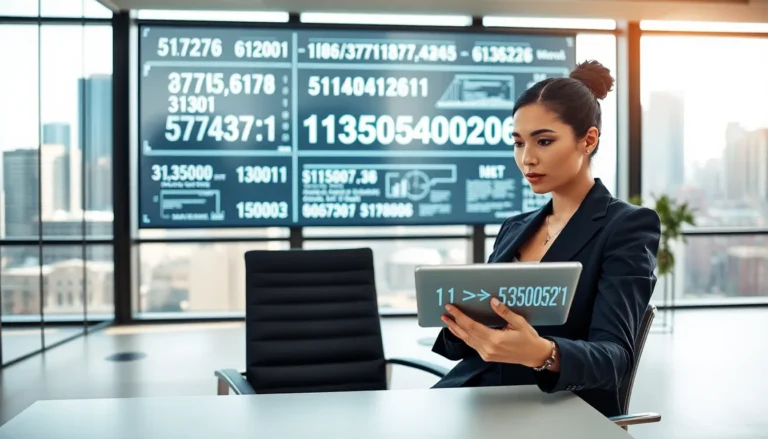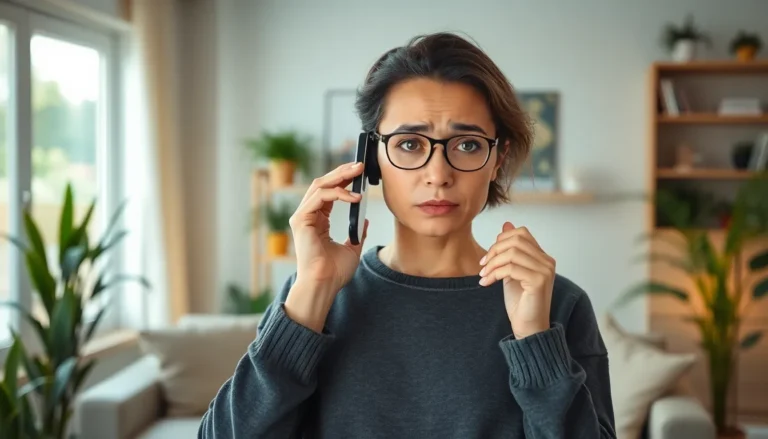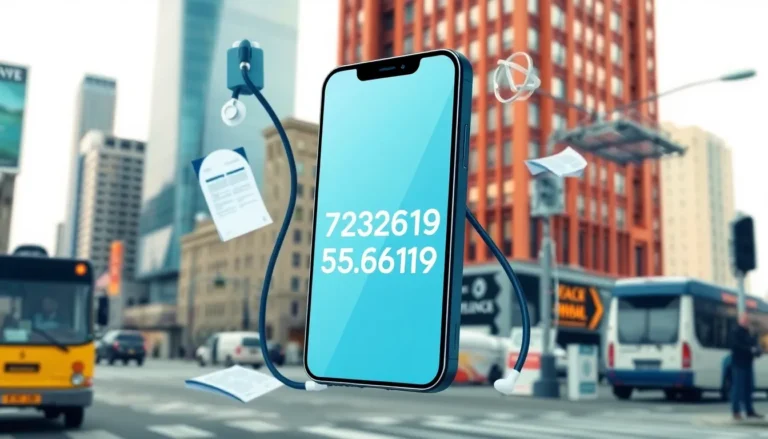Have you ever tried to connect your hearing aids to your iPhone only to be met with the dreaded “pairing failed” message? It’s like trying to teach a cat to fetch—frustrating and downright confusing! Technology is supposed to make life easier, but when your hearing aids refuse to play nice with your phone, it can feel like you’re stuck in a silent movie.
Table of Contents
ToggleUnderstanding Bluetooth Connectivity
Bluetooth technology offers a wireless way to connect devices like hearing aids and iPhones. Users often rely on this integration to enhance the listening experience, but issues may arise.
How Bluetooth Works with Hearing Aids
Bluetooth enables hearing aids to communicate directly with iPhones. Transmitting sound signals wirelessly enhances audio quality for users. Hearing aids equipped with low-energy Bluetooth, known as Bluetooth Low Energy (BLE), consume less power while maintaining connectivity. Pairing these devices transfers phone calls, music, and notifications straight to the hearing aids. Properly functioning, this connection simplifies communication and improves overall user experience.
Common Bluetooth Issues
Bluetooth pairing failures frequently frustrate users. Interference from other electronic devices can disrupt connections. Outdated software on either the hearing aids or iPhone may prevent successful pairing. Turning on airplane mode can also hinder the Bluetooth connection. Users should ensure that devices are close to each other and compatible. Checking device settings for visibility might resolve undetected devices in the pairing process. Following manufacturer guidelines and resetting devices often restores connectivity.
Troubleshooting Pairing Problems
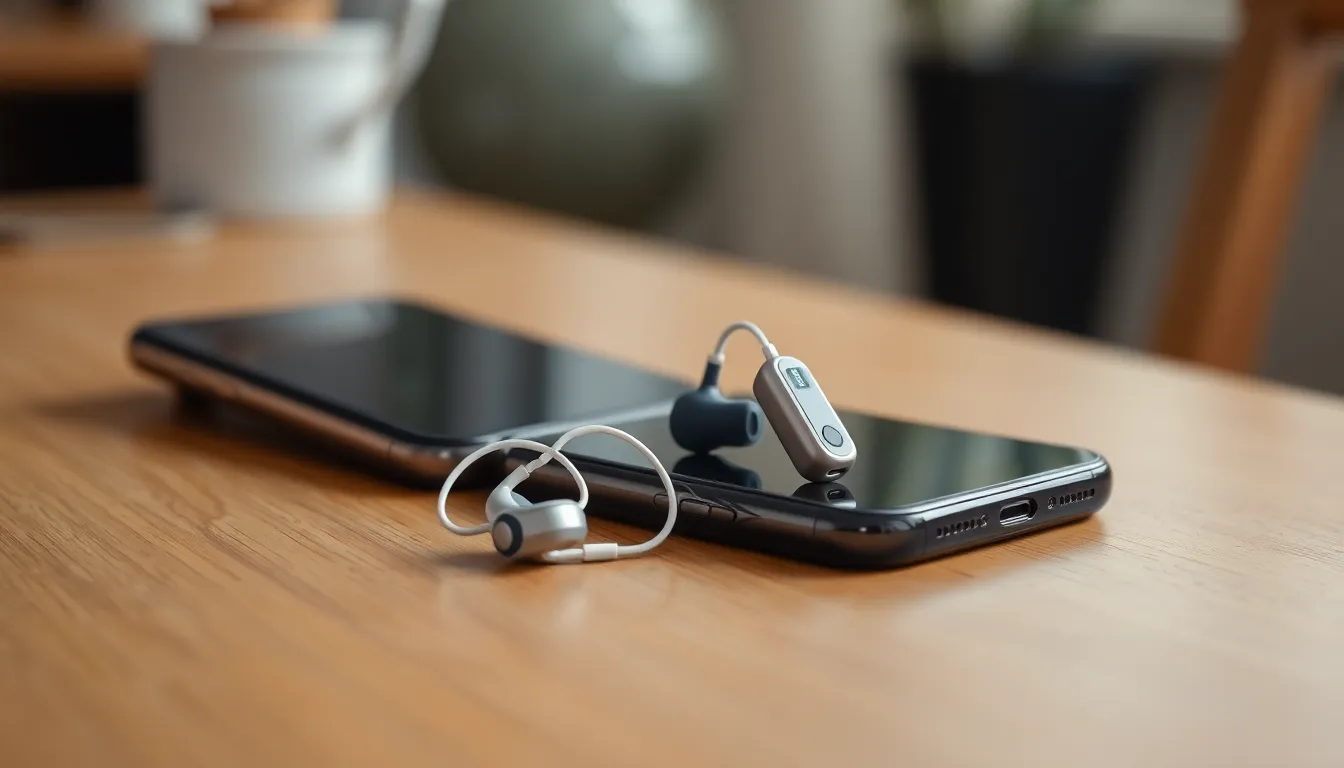
Pairing issues between hearing aids and an iPhone can result from various factors. Users often need to systematically address several areas to resolve these challenges.
Check Hearing Aid Compatibility
Compatibility between hearing aids and iPhone models plays a crucial role. Most modern hearing aids support Made for iPhone technology, which optimizes the connection. Users must verify that their hearing aids are compatible with iOS, as older models may lack this support. Checking the manufacturer’s specifications can confirm compatibility status. If the hearing aids connect to other devices without issues, the problem might lie with the iPhone.
Resetting Your Hearing Aids
Resetting hearing aids can solve many connectivity problems. Users should refer to the user manual for specific instructions on resetting their models. Often, turning off the hearing aids and removing the batteries can initiate a reset. Replacing batteries after a few minutes may restore proper functionality. Pairing the devices again can sometimes lead to a successful connection.
Updating iPhone Software
Outdated iPhone software could inhibit pairing capabilities. Apple’s regular updates enhance compatibility and resolve bugs. Navigating to Settings, users can check for available updates under General. Installing the latest version of iOS may fix pairing issues. After completing the update, restarting the iPhone ensures a refreshed start for the Bluetooth feature.
Additional Factors to Consider
Users often encounter additional factors that complicate the pairing process between hearing aids and iPhones. Understanding these factors can enhance connectivity experiences.
Interference from Other Devices
Interference from other electronic devices can disrupt Bluetooth signals. Common culprits include Wi-Fi routers and microwaves, which may emit frequencies competing with Bluetooth. Maintaining distance from such devices can improve the chances of successful pairing. Users should also check for nearby devices actively using Bluetooth, such as wireless headphones or speakers. Too many devices in proximity can overwhelm the signal, leading to connection failures.
Battery Life and Power Issues
Power levels in hearing aids significantly influence their performance. Low battery life can hinder Bluetooth connectivity and impair overall functionality. It’s crucial for users to ensure batteries are fully charged or replaced when necessary. Hearing aids with insufficient power may not provide the requisite signals for pairing. Regular checks on battery status can prevent unexpected connectivity hurdles, allowing users to enjoy uninterrupted communication with their iPhones.
Seeking Professional Help
When troubleshooting pairing issues with hearing aids and an iPhone, seeking professional help can provide valuable insights.
Consulting an Audiologist
Consulting an audiologist offers personalized assistance to troubleshoot pairing features. Audiologists possess expertise in hearing technology, enabling them to identify compatibility issues specific to the user’s hearing aids and iPhone model. They can assess device settings and suggest optimal adjustments for a successful connection. Regular follow-ups can ensure ongoing support, especially if pairing problems persist despite following basic troubleshooting steps.
Contacting Hearing Aid Manufacturer
Contacting the hearing aid manufacturer can yield helpful information directly related to specific products. Manufacturers often provide customer support to address pairing concerns and can guide users through advanced troubleshooting procedures. They might offer firmware updates or adjustments that improve the connection between hearing aids and iPhones. Additionally, accessing product-specific FAQs can clarify common issues and enhance the user’s understanding of their device capabilities.
Pairing hearing aids with an iPhone can be a frustrating experience but understanding the common issues can significantly ease the process. Ensuring device compatibility and keeping software updated are crucial steps in achieving a successful connection. Users should also be mindful of potential interference from other electronics and the importance of battery life.
When problems persist seeking professional assistance can provide tailored solutions. Audiologists and manufacturers offer valuable insights that can help users navigate the complexities of their devices. By taking proactive measures and utilizing available resources users can enhance their hearing experience and maintain seamless connectivity with their iPhones.
